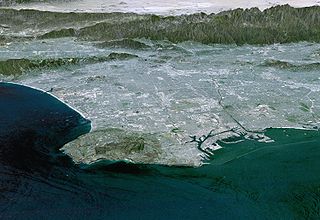In the Feb. 5, 2013 “A California air quality progress report” post, in citing the California Air Pollution Control Officers’ Association (CAPCOA) from its “California Progress Toward Clean Air” report, I wrote: “That being said, CAPCOA points out that ‘Clearly, California’s clean air strategies continue to serve as a model for the rest of the nation and throughout the world.’”
If this is true, what this means is California is both a trailblazer and trendsetter in the fight to rid the air of contamination and that would make the venue the world’s epicenter of contaminated air remediation – acronym: ECOCAR.
I am of the belief that any doable strategy – regardless of where such is proposed – that attempts to try to reduce harmful emissions, regardless of source, should never, not be given the time of day. All are, at the very least, worth consideration if not outright application.

In “Metrolink to receive $34.66 million in AQMD funding for low-emission Tier 4 locomotives,” a Feb. 4th news release, Metrolink, a commuter rail service serving Los Angeles, Orange, Riverside, San Bernardino, San Diego and Ventura counties, announced that it will procure as many as 20 what are called “Tier 4” low-emissions locomotives to power trains on its 512-mile network of rail lines.
Expressed in the release was the following: “In an effort that will benefit all of Southern California, Tier 4 locomotives are expected to reduce particulate matter and nitrogen oxide emissions by over 80 percent compared to current Tier 0 locomotive engines. Metrolink is the first commuter rail system in the country to procure the new Tier 4 locomotives.”
In addition, “Metrolink will also work with [the South Coast Air Quality Management District] in the development of a liquefied natural gas (LNG) locomotive.”
But it isn’t just this.
Surrounding communities will benefit air-wise because the new Tier 4 locomotives will aid in lowering toxic emissions. Due to the upgraded locomotives’ higher horsepower ratings compared to existing Tier 0 motive power models, greater pulling (or pushing) capabilities per unit will allow for additional passenger train-car capacity which means locomotives will be able to haul additional passenger-train cars. Via the addition of extra passenger-train cars per train, more passengers riding such are therefore not occupying cars and therefore not adding to congestion on, presumably, already overburdened and crowded area roadways and freeways.
Congested area roadways no doubt, is one of the reasons or maybe even the main impetus for the southern California regional commuter service being begun in 1992 in the first place.
And just how extensive a problem is L.A.-Long Beach-Santa Ana-area road congestion?
Every day drivers vie for space on the region’s 25,827-mile network of roads and freeways. As a result, 254,783,000 miles of vehicle travel are logged daily. It’s no wonder one has come to expect delays and the wasting of fuel and discharging of emissions into the air as a result of that fuel being ignited.
According to Texas Transportation Institute 2012 Urban Mobility Report data, Los Angeles-Long Beach-Santa Ana-area drivers in 2011 experienced 501,881,000 total annual person-hours and 61 annual “Peak Auto Commuter” person-hours of delay causing an excess 219,710,000 gallons of fuel to be consumed which resulted in the release of 3.578 billion pounds of carbon dioxide (CO2) into the air. Comparatively speaking, data presented from previous years shows conditions have worsened.
For its part, Metrolink – governed by the Southern California Regional Rail Authority – by providing a valuable service and by its embracing of sustainable practices and programs like the procurement of Tier 4 low emissions locomotives, will serve to help to improve quality of life for southern Californians. Think what the region would be like if such a service – carrying 44,000 daily commuters on seven service lines dotted with 55 stations – didn’t exist; I shudder at the very thought!
Image above: NASA
– Alan Kandel